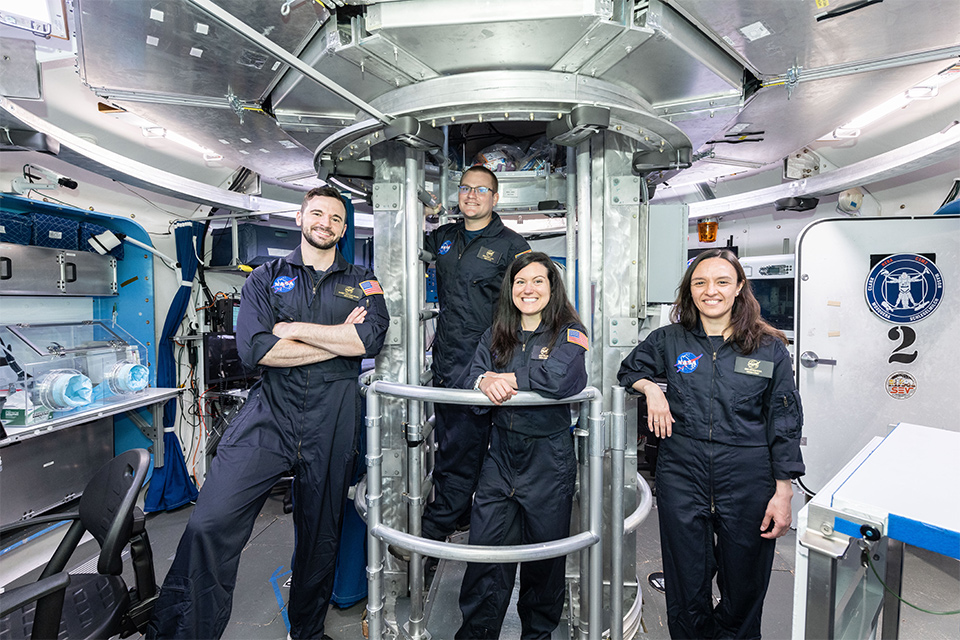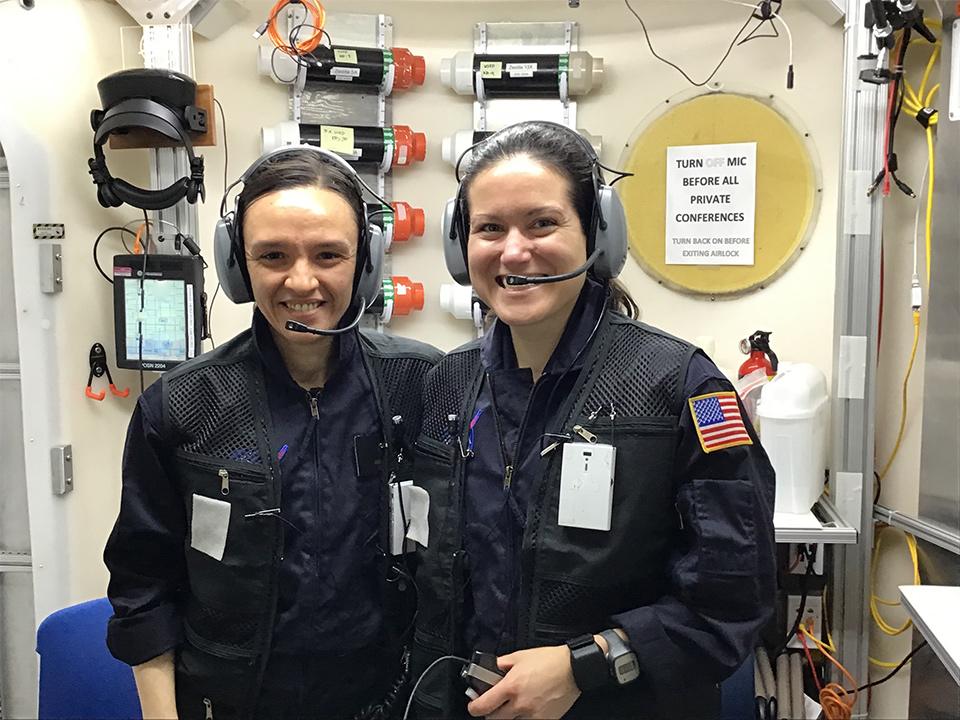“NASA’s Always Seeking the Next HERA Crew. Could It Be You?”
That’s the header line on
an article all about HERA (Human Exploration Research Analog) on NASA’s website. Located at NASA”s Johnson Space Center in Houston,
HERA is a ground-based analog simulation of isolation and confinement that astronauts would experience during spaceflight.
When we heard about the opportunity to interview a real rocket propulsion engineer who had participated in this project, we were all ready to jump on the call. We had so many questions about what this project taught to its participants—from a working standpoint, an emotional standpoint, and a physical standpoint.
Meet Our Rocket Scientist, Julie Mason
Julie Mason is the rocket propulsion engineer in question. Mason studied engineering mechanics and astronautics at the University of Wisconsin-Madison. She also attended the space studies program at the International Space University and earned her MS in Mechanical Engineering at University of Alabama in Huntsville. Pretty impressive, huh?
Her crew, the HERA XIX crew, consisted of four individuals, Barret Schlegelmilch of Kent, Washington; Christian Clark of Honolulu, Hawaii; Ana Mosquera of Washington, D.C.; and, of course, Julie Mason. They participated in a 45-day space voyage simulation to Phobos, the largest moon of Mars.
While
anyone can apply to participate in HERA, NASA tends to lean towards those with “astronaut-like qualities”—including a psychological assessment, proven technical skills, and typically an advanced degree or military experience.
A Typical Day in the HERA Habitat
“Each day we would wake up at 7 am. Mission Control had a pre-selected list of songs that would play in the morning, same as they do on the space stations.”
From there, they would have post-sleep activities, a planning conference with Mission Control, habitat maintenance and upkeep, robotics simulations, and other planned simulations from Mission Control. At the end of the day. They could reconvene on another planning conference, where they would wrap things up for dinner and pre-sleep activities. Other activities included media outreach, calls into local schools, and physical and mental examinations.
Just like astronauts in the Space Stations, the HERA participants had a peek into the outside.
“Your world view definitely narrows into the mission and what’s going on within the habitat,” explains Mason, “We did receive a daily newspaper and had weekly conferences with family. That was your peek into the outside world.”
The Mental + Physical Tolls of Isolation
“I wanted to see if I was up to the challenge. I wanted to see what it would be like to live like an astronaut.”
Julie Mason came in prepared, knowing a little bit of what to expect—partly due to her pre-mission training with her team. She came in prepared for breaking the “two-week wall,” which she had been warned was a tough barrier to cross. However, instead of experiencing mental duress, Mason experienced the opposite. The HERA habitat offered her an outlook of gratitude and appreciation.
“It’s learning to appreciate the little things in life and being happy with what you have now instead of instant gratification.”
Physically, the participants, confined to a 636-foot habitat, adjusted to different ways to get exercise. As part of the program, they alternated weight lifting and cycling every day. Mason, a runner, felt she actually become physically stronger during her time in HERA.
Working Together
Think of three of your coworkers that you spend around 40 hours a week working alongside. Now, cut your office into 636 square feet—and imagine eating, sleeping, and working alongside these same coworkers for 45 days straight. That was the reality for Mason and the other three participants during their 45-day stay in HERA.
On coworking for “infinite hours” Mason explains, “I think it goes back to being a good teammate, being respectful and considerate of each other. We had a common understanding of how we wanted to live and work together. We all trusted and respected each other’s boundaries.”
As an
introvert going into this, Mason felt that she was able to have her “introvert time” while reading or writing while others went about their own activities. Mason explains that many of these boundaries and expectations were set during their two-week pre-mission training.
Additionally, Mason explains that the mission allowed her to appreciate little things in life and to
conserve expendable resources in her own day-to-day life.
Life After HERA
“A lot of things in HERA apply to day-to-day life—such as being open to change. Things don’t always go as planned, being flexible, being open-minded, and having a sense of humor.”
After HERA. Mason returned to her full-time job at
Boeing, where she develops propulsion systems that will enable deep space exploration. Upon leaving HERA, Mason was able to come back to a slew of pretty exciting work—including work on a variety of government and military projects.
As for the other participants in Mason’s journey? She explains that they became, during their 45 days together, a sort of family. As such, they are planning to have a reunion soon :)












